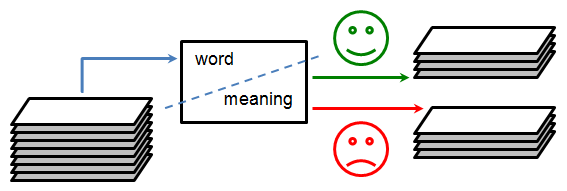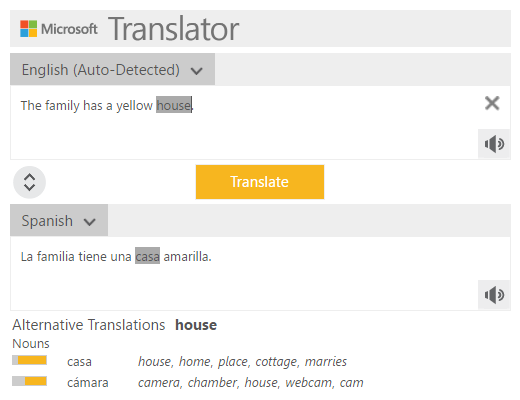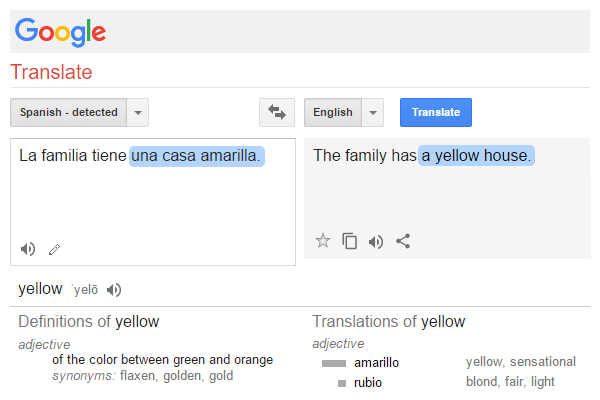Learn More
Other resources for learning English
Reading definitions in a learner's dictionary (like Learn These Words First) can help you understand the meanings of new English words. But if you want to remember these words and their meanings later, you need to practise using the words.
Here are some ways you can practise:
- When you are reading and find an unfamiliar word, write down the word and its meaning.
- Make flashcards and use them to review new vocabulary words.
- Translate sentences from English into another language you know. Look at sentences other people have translated.
- Read sentences aloud and notice words in context. Read aloud with a recording.
- Study an English course and do the exercises to learn vocabulary and grammar rules.
- Talk with an English speaker or exchange written notes over internet.
- Watch videos with English captions.
What do you do that helps you learn and remember new vocabulary?
Flashcards
Flashcards can help you study and remember words you want to learn.
You can make flashcards using small paper cards: On the front side of each card, write a word or phrase you want to learn. On the back side, write the meaning or translation.
Every day, review your cards: Look at one side of each card and try to remember what is on the other side. Then look at the other side to check your answer.
- If your answer was correct, put the card in a pile to review again tomorrow.
- If your answer was not correct, put the card in a pile to review again after an hour.

A computer can also be used to review flashcards:
- You can use our simple flashcard tool by clicking here: Simple Flashcards.
- Or you can use flashcard software from other websites (for example: memrise.com or quizlet.com).
Duolingo
Duolingo (www.duolingo.com) is a free online language course that can help you learn English (or several other languages).

- English word meanings and grammar are explained in 21 languages: Arabic, Chinese, Czech, Dutch, French, German, Greek, Hindi, Hungarian, Indonesian, Italian, Japanese, Korean, Polish, Portuguese, Romanian, Russian, Spanish, Turkish, Ukrainian, Vietnamese.
- More than a thousand English words are taught in more than one hundred short lessons.
- The lessons are presented as games in which you practise reading, writing, listening and speaking.
- You can use flashcards to review the words you have learned.
- Duolingo is also available as a mobile-phone application.
El Book
El Book (archive of fluenz.org) is a very basic English self-learning course for Spanish speakers.

- The downloadable course includes a printable book (pdf) and audio recordings (mp3).
- The book has eight short chapters that use Spanish to teach 50 words and phrases of essential English. These lessons include written exercises.
- The eight audio recordings use Spanish to explain the English vocabulary from the book and help with pronunciation.
Microsoft Translator
You can use Microsoft Translator (www.bing.com/translator) to translate sentences to and from English.

- Think about how you would translate a sentence to or from English. Then use Microsoft Translator to check your understanding of English vocabulary and grammar.
- Type a sentence in English and see it translated to your choice of 53 other languages. Or type a sentence in one of these other languages and see it translated to English. (Note that computer translations sometimes contain mistakes.)
- Click a word in either language to highlight the translated word in the other language. This can help you see where the two languages arrange word order differently.
- Clicking a word also lists alternative translations for the word.
- You can listen to the pronunciation of sentences in English (and in some other languages).
- Microsoft Translator is also available as a mobile-phone application.
Google Translate
You can use Google Translate (translate.google.com) to translate sentences to and from English.

- Think about how you would translate a sentence to or from English. Then use Google Translate to check your understanding of English vocabulary and grammar.
- Type a sentence in English and see it translated to your choice of 103 other languages. Or type a sentence in one of these other languages and see it translated to English. (Note that computer translations sometimes contain mistakes.)
- Click a phrase in the translation to highlight the corresponding phrase in the other language and list alternative translations for the phrase.
- Double-click a word in either language to show the word's definition and list alternative translations for the word. (This works for some languages.)
- You can listen to the pronunciation of sentences in English (and in some other languages).
- Google Translate is also available as a mobile-phone application.